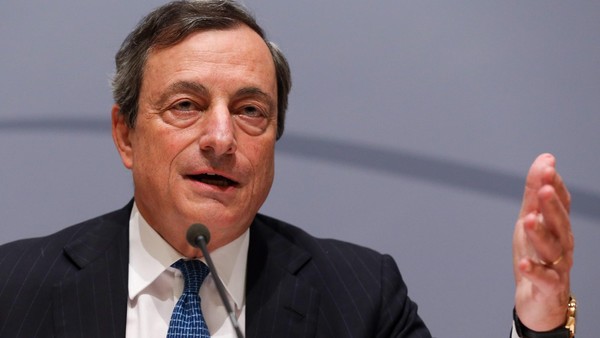Q&A: The ECB’s crucial vote
Claire Jones
Jun 05 09:52

It’s crunch time for the European Central Bank. After more than six months of jawboning, pretty much every seasoned ECB watcher thinks the governing council is finally going to ease monetary policy on Thursday.
Disappointing growth, worryingly weak inflation, and the rise of anti-establishment parties in the European Parliamentary elections have only added to the sense that rate-setters must do something to stave off the threat of deflation and help stimulate lending in the real economy. What can we expect from the ECB and how will it work?
They’re all talk aren’t they? Why is everyone so convinced they’ll act?
Expectations have been firmly cemented since ECB president Mario Draghi dropped a strong hint at last month’s press conference that the governing council was willing to act. Quote below:
Draghi …I would say that the Governing Council is comfortable with acting next time, but before we want to see the staff projections that will come out in early June.
That’s as clear as you’re going to get from a central banker.
Since then, we’ve had the results of the European Parliamentary elections and an unexpectedly low figure on inflation. Both events, especially the inflation figure, make action more likely.
Draghi warned at a gathering of global central bankers in Sintra last week of the threat of a “pernicious negative spiral” of low inflation and tight credit conditions. If realised, the spiral would push inflation even lower, wiping out demand and raising debt burdens in the periphery in the process. The 0.5 per cent figure for inflation in May will have raised the level of concern at the Eurotower.
So what’s the ECB going to do?
All the talk in recent weeks has been of a package of measures.
There will almost certainly be rate cuts, including the radical step of lowering the deposit rate below zero. Neither the Federal Reserve, the Bank of Japan or the Bank of England have gone as far as that.
A cut of 10, or 15, basis points will also leave the benchmark main refinancing rate, now 0.25 per cent, at a fresh record low. The deposit rate, already at zero, is likely to be cut by a similar amount. The move into negative territory would impose a levy on the deposits lenders park at the ECB and, the central bank hopes, weaken the euro and spur lending in the process.
But will it work?
Despite the radical nature of many of the measures, there’s a lot of scepticism out there about whether they’ll do much good. The German Sparkassen might beg to differ, but a lot of economists think that record low interest rates, and even going into negative territory, will do little to help boost inflation and growth. This from Berenberg Economics sums up the thoughts of many:
Berenberg Economics: Rates are extremely low anyway, banks have ample liquidity. A cut in all rates and some liquidity injection will not change the medium-term outlook for growth and inflation in a meaningful way…
…The major steps to ease the credit crunch for small and medium-sized enterprises are to conclude the asset quality review and stress tests fast and to fix the banks that may need fixing. Once banks have taken these hurdles, they are in a better position to extend more loans. Targeted ECB incentives to step up such lending now will make little difference.
There’s also a feeling that the ECB has left it too late. Economists at Goldman Sachs think negative rates will not matter as much now as they did 18 months ago, when there was a lot more excess liquidity sloshing. Whether or not that is the case is hard to say, though. No central bank managing a currency as important as the euro has tried negative rates. The ECB really is stepping into the unknown here and no-one is really in a position to say how this will affect the exchange rate (which it’s hoping to weaken). Funnily enough, given the flak that the ECB has come in for its constant jawboning, some think that what Draghi has to say about whether policy makers will do even more if inflation continues to disappoint is an important factor to have in the mix.
What do they want to hear?
Many are hoping for stronger rhetoric on the governing council’s willingness to conduct quantitative easing. A clear signal that the ECB is ready to embark on a big bond-buying spree — and soon — should inflation continue to disappoint would help.
Top officials at the ECB have started to sound more concerned about the risk of leaving it too late to stop a bout of worryingly low inflation, or even deflation, emerging. Draghi’s warning of a “pernicious negative spiral” was an example of this. It will be interesting to see whether the phrase, or others like it, are used in today’s post-meeting press conference.
Anything else?
It’s also worth keeping an eye on the latest round of inflation projections, which the ECB staff will release this afternoon. The key issue here is whether the estimate for inflation in 2016 is revised down. Back in March, when the current projections were published, the central bank expected inflation of 1.5 per cent in 2016, rising to 1.7 per cent by the fourth quarter. Though the new projections do not take into account the May inflation figure, it is still more likely than not that the estimate for the year after next will be a little lower.
0 comments:
Publicar un comentario